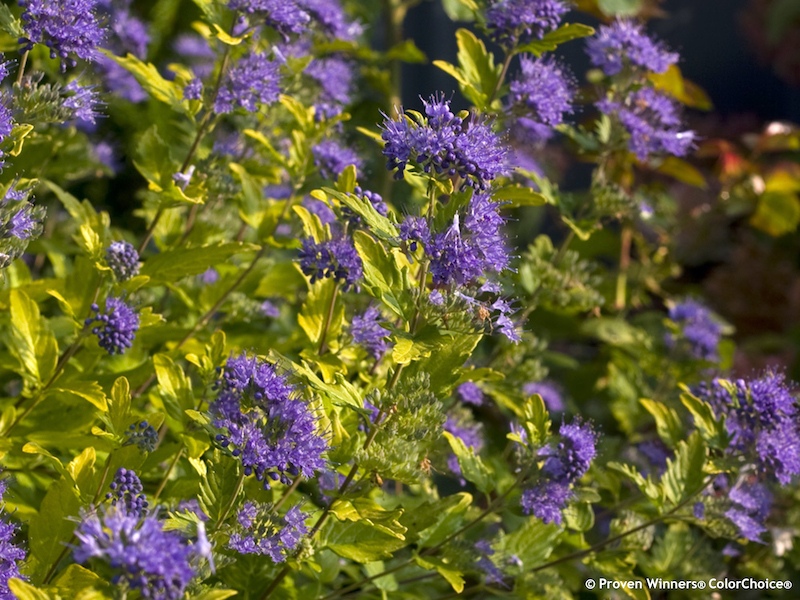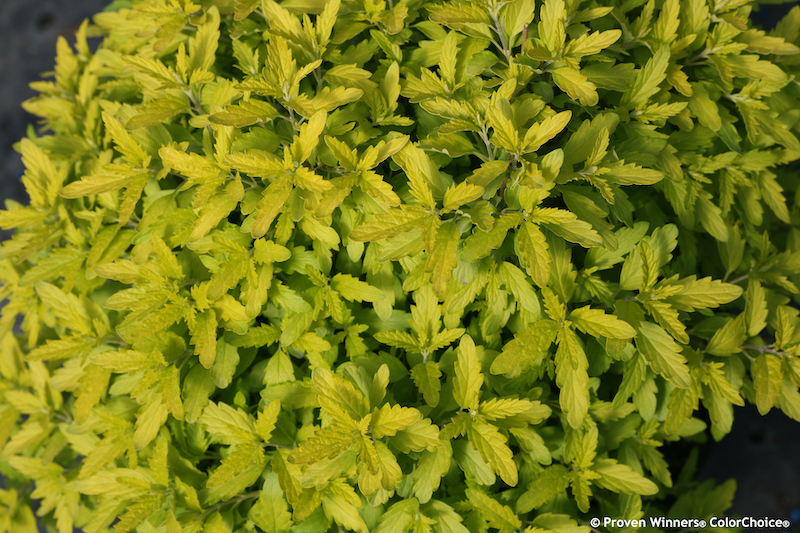Bluebeard is a perennial flowering shrub that introduces bold color to a space. The blooms are lovely to admire and are also a draw for pollinators like butterflies and bees. Bluebeard blooms during the late spring and summer. In some instances, Bluebeard may not bloom. This can be frustrating, but it is fixable. Find out why your Bluebeard is not blooming and what you can do to help this beauty put on a stunning floral display.

Common Reasons Why Bluebeard Isn’t Blooming
-
Pruning
Bluebeard is a deciduous shrub, and an annual trim to remove dead growth will keep this plant looking great. Overdoing the trimming may reduce flower production. Pruning this shrub severely just prior to blooming may reduce the flowering volume that season.
-
Not Enough Light
Plant Bluebeard in an area that receives at least 6 hours of sunlight daily. Limited light does not support growth for this sun lover. This shrub may not set buds if it is struggling in the shade.
-
Fertilizer
Bluebeard is not a heavy feeder, but it responds well to being fed. Not all fertilizers are the same, and giving the plant the incorrect fertilizer can impact the bloom cycle. Bluebeard needs a balanced fertilizer, and applying too much nitrogen could cause the plant not to set buds.

Pruning Bluebeard To Help It Bloom
Overgrown plants may not bloom or look attractive. Remove dead or damaged growth so the Bluebeard bush can direct its energy into new, healthy growth. Spring is a good time to shape the plant and remove dead branches, or canes, that naturally form near the shrub's center. Err on the side of caution and wait until leaves start to appear before pruning, so it is easy to confirm which canes are alive and which are not.

Fertilizing Bluebeard To Help It Bloom
An under-nourished plant may not bloom. Give your Bluebeard a boost with a balanced, slow-release fertilizer in the spring. Fertilizers high in nitrogen may reduce flower production. Bluebeard prefers soil with a neutral pH, so avoid applying an acidic fertilizer.
Get Bluebeard To Produce More Blooms
The easiest way to get your Bluebeard to produce more blooms is to provide the best care possible. Bluebeard is easy to grow, but dialing in the care will help the plant thrive and bloom. Place the plant in an area that receives at least 6 hours of sunlight. The soil should be rich and moist but well-drained and have a neutral pH.
Why Bluebeard Isn’t Blooming
- Heavy pruning
- Not enough sunlight
- Improper fertilizer or feeding schedule
 |
Author Alison Cotsonas - Published 09-01-2022 |
